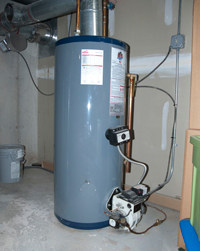How to Care for Your Home's Hot Water System EffectivelySimple Steps to Caring for Your Home's Hot Water System
Click HereWhat're your concepts about How to Maintain Your Water Heater & Prolong its Life?

Hot water is important for day-to-day comfort, whether it's for a refreshing shower or washing recipes. To ensure your warm water system runs efficiently and lasts much longer, regular upkeep is key. This short article offers practical tips and understandings on how to preserve your home's warm water system to avoid interruptions and expensive repairs.
Intro
Preserving your home's hot water system may appear complicated, yet with a few simple steps, you can guarantee it operates efficiently for many years to come. This overview covers everything from recognizing your hot water system to do it yourself maintenance pointers and recognizing when to contact professional aid.
Value of Preserving Your Hot Water System
Normal upkeep not only extends the life-span of your warm water system but additionally guarantees it operates successfully. Overlooking maintenance can bring about decreased performance, higher power expenses, and even early failure of the system.
Signs Your Warm Water System Needs Upkeep
Understanding when your hot water system requires focus can stop major issues. Keep an eye out for indicators such as irregular water temperature, weird noises from the heating system, or rusty water.
Recognizing Your Hot Water System
Prior to diving into maintenance tasks, it's practical to understand the fundamental components of your warm water system. Typically, this consists of the water heater itself, pipelines, anode poles, and temperature controls.
Month-to-month Maintenance Tasks
Routine monthly checks can assist capture small problems prior to they escalate.
Purging the Water Heater
Flushing your hot water heater removes sediment build-up, improving effectiveness and prolonging its life.
Checking and Changing Anode Rods
Anode rods stop rust inside the container. Inspecting and replacing them when worn is critical.
Evaluating and Adjusting Temperature Level Setups
Readjusting the temperature settings makes sure ideal efficiency and safety.
DIY Tips for Maintenance
You can do numerous maintenance jobs yourself to maintain your warm water system in top problem.
Checking for Leakages
Regularly check pipelines and connections for leakages, as these can result in water damage and greater expenses.
Examining Pressure Relief Valves
Evaluating the stress safety valve guarantees it functions correctly and avoids too much pressure buildup.
Protecting Pipelines
Protecting hot water pipelines decreases warm loss and can conserve power.
When to Call a Specialist
While do it yourself upkeep is beneficial, some issues require specialist expertise.
Facility Concerns Calling For Expert Assistance
Instances consist of significant leakages, electric issues, or if your water heater is constantly underperforming.
Regular Expert Maintenance Advantages
Expert maintenance can include extensive inspections, tune-ups, and making certain conformity with safety and security criteria.
Conclusion
Regular maintenance of your home's hot water system is vital for effectiveness, longevity, and price savings. By following these suggestions and recognizing when to seek professional aid, you can guarantee a reputable supply of warm water without unanticipated interruptions.
How to Maintain an Instant Hot Water Heater
Before tinkering with your hot water heater, make sure that it’s not powered on. You also have to turn off the main circuit breaker and shut off the main gas line to prevent accidents. Also turn off the water valves connected to your unit to prevent water from flowing into and out of the appliance. 2. When you’re done, you have to detach the purge valves’ caps. These look like the letter “T” and are situated on either side of the water valves. Doing so will release any pressure that has accumulated inside the valves while at the same time avoid hot water from shooting out and burning your skin. 3. When the purge valves’ caps are removed, you have to connect your hosing lines to the valves. Your unit should have come with three hoses but if it didn’t, you can purchase these things from any hardware or home repair shops. You can also get them from retail stores that sell water heating systems. Read the user’s manual and follow it to complete this task properly. When the hosing lines are connected, open the purge port’s valves. 4. You should never use harsh chemical cleaners or solutions when cleaning your unit. Make use of white vinegar instead. It should be undiluted and you’ll probably use about 2 gallons. 5. Now flush your water heater. This task should probably take about 40 minutes. We can’t give you specific directions for this because the procedure is carried out depending on the type, model and brand of your heater. With that being said, refer to the user’s manual. 6. When you’re done draining the unit, you have to turn off the purge port valves again. Remove the hosing lines that you earlier installed on each of the water valves. Put the valve caps (purge port) back in their respective places and be very careful so as not to damage the rubber discs that are found inside these caps. 7. Now that everything’s back in place, check your user’s manual again to find out how to reactivate your water heating system. 8. Once it is working, turn one of your hot water faucets on just to let air pass through the heater’s water supply pipes. Leave the tap on until water flows smoothly out of it. https://www.orrplumbing.com/blog/2014/september/how-to-maintain-an-instant-hot-water-heater/

We had been guided to that editorial about Water Heater Maintenance Tips You Can't Afford to Forget from someone on our other web blog. Those who appreciated our blog post kindly consider to share it. Thanks so much for your time invested reading it.
Book Services